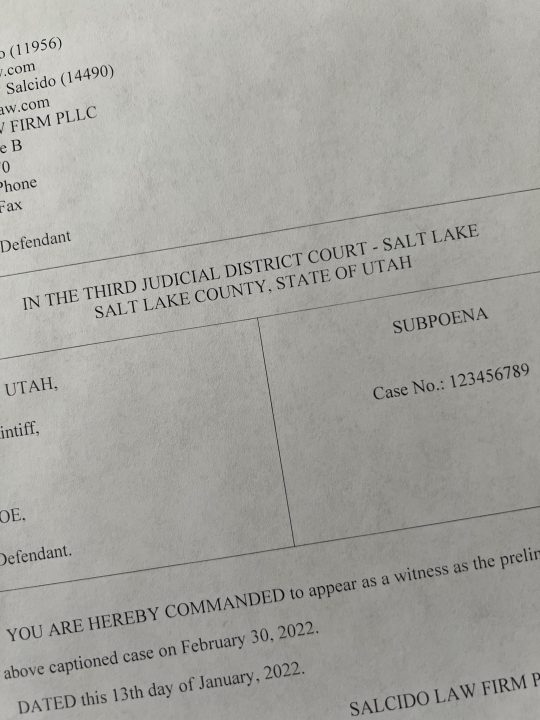Fourth Amendment Requirements With Regards to Traffic Stops

The Fourth Amendment’s prohibition of “unreasonable searches and seizures” extends to temporary detentions, such as traffic stops. See U.S. Const. amend. IV; Brendlin v. California, 551 U.S. 249, 255 (2007). To survive constitutional scrutiny, a traffic stop must be (1) “lawful at its inception” and (2) “otherwise executed in a reasonable manner.” Illinois v. Caballes, 543 U.S. 405, 408 (2005). To be lawful at its inception, the traffic stop must be supported by a reasonable suspicion that a person has been, is, or is about to be, engaged in criminal activity. See State v. Roybal, 2010 UT 34, ¶ 14. The reasonable suspicion must be based upon “specific and articulable facts and rational inferences.” State v. Morris, 2011 UT 40, ¶ 16. In reviewing a suppression ruling, Utah courts do not look at the information the officer possessed at the time of the stop in isolation, but “look to the totality of the circumstances to determine whether, taken together, the facts warranted further investigation by the police officer.” State v. Alverez, 2006 UT 61, ¶ 14.
Is an Informant Tip Enough?
The reasonable suspicion standard does not require that the officer actually observe the violation. Morris, 2011 UT 40, ¶ 16. Reasonable suspicion may be based upon a tip. Roybal, 2010 UT 34, ¶¶ 14–20. An informant’s tip creates reasonable suspicion if the information (1) is reliable, (2) provides sufficient detail of the criminal activity, and (3) is confirmed by the investigating officer. State v. Prows, 2007 UT App 409, ¶ 14. When an identified—i.e., non-anonymous—citizen informant provides a tip, Utah courts presume its reliability. Roybal, 2010 UT 34, ¶ 19. Whether a police informant is personally acquainted with the suspect has no bearing on the analysis. Utah courts “find it inappropriate to attach a presumption of either greater or lesser reliability to a tip from a personally involved informant.” Id. ¶ 19.
A number of DUIs and other types of vehicle related crimes result from the tip of an informant, usually someone driving down the road. It makes sense to challenge the tip in many cases depending on whether the three requirements of informant tip reliability are met as outlined above.




